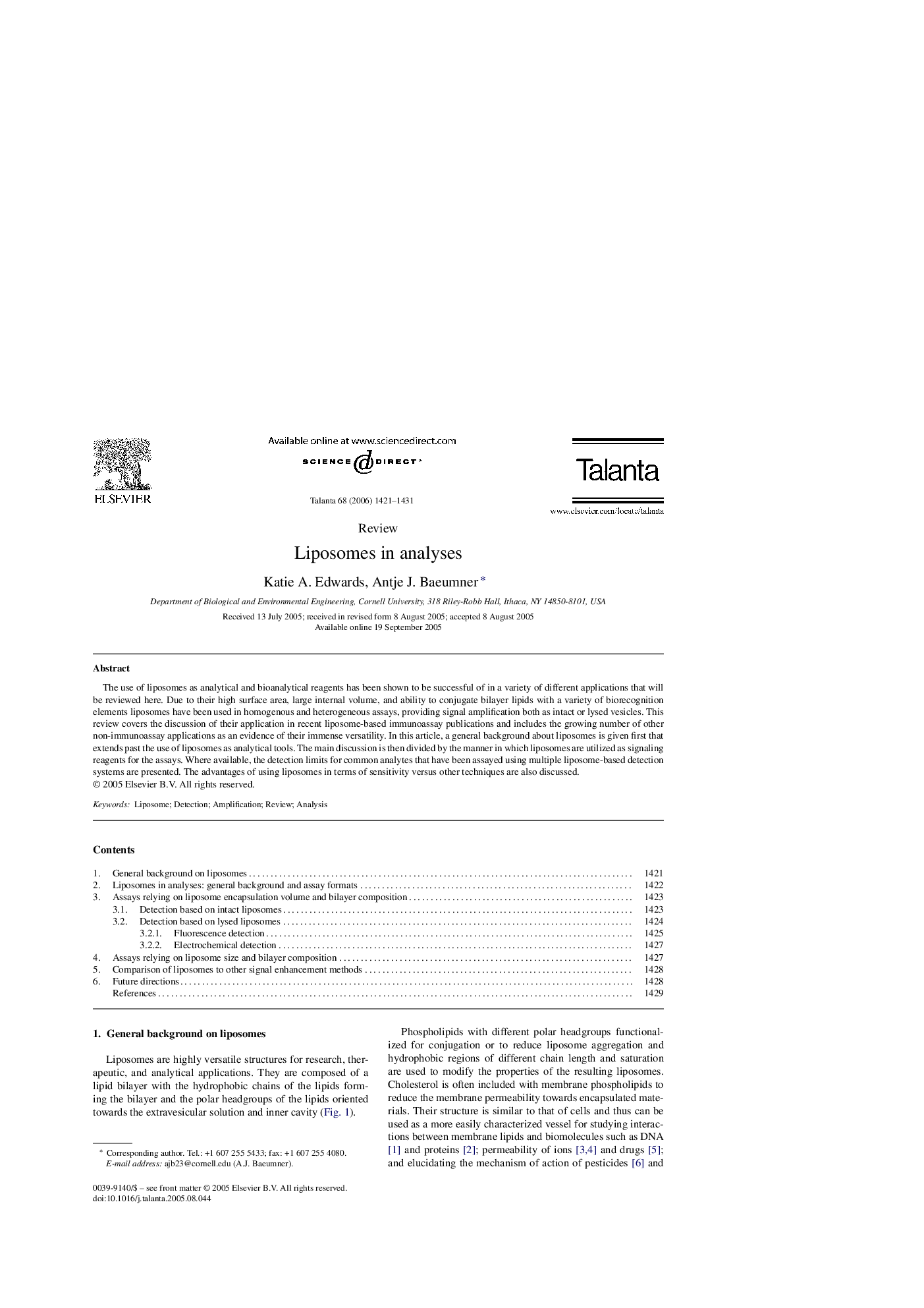| Article ID | Journal | Published Year | Pages | File Type |
|---|---|---|---|---|
| 1246555 | Talanta | 2006 | 11 Pages |
The use of liposomes as analytical and bioanalytical reagents has been shown to be successful of in a variety of different applications that will be reviewed here. Due to their high surface area, large internal volume, and ability to conjugate bilayer lipids with a variety of biorecognition elements liposomes have been used in homogenous and heterogeneous assays, providing signal amplification both as intact or lysed vesicles. This review covers the discussion of their application in recent liposome-based immunoassay publications and includes the growing number of other non-immunoassay applications as an evidence of their immense versatility. In this article, a general background about liposomes is given first that extends past the use of liposomes as analytical tools. The main discussion is then divided by the manner in which liposomes are utilized as signaling reagents for the assays. Where available, the detection limits for common analytes that have been assayed using multiple liposome-based detection systems are presented. The advantages of using liposomes in terms of sensitivity versus other techniques are also discussed.
